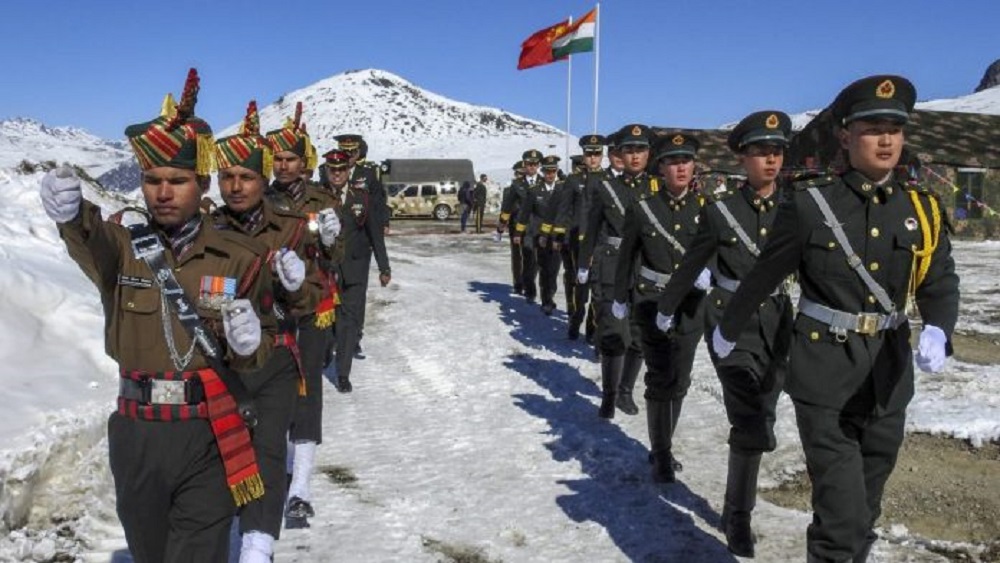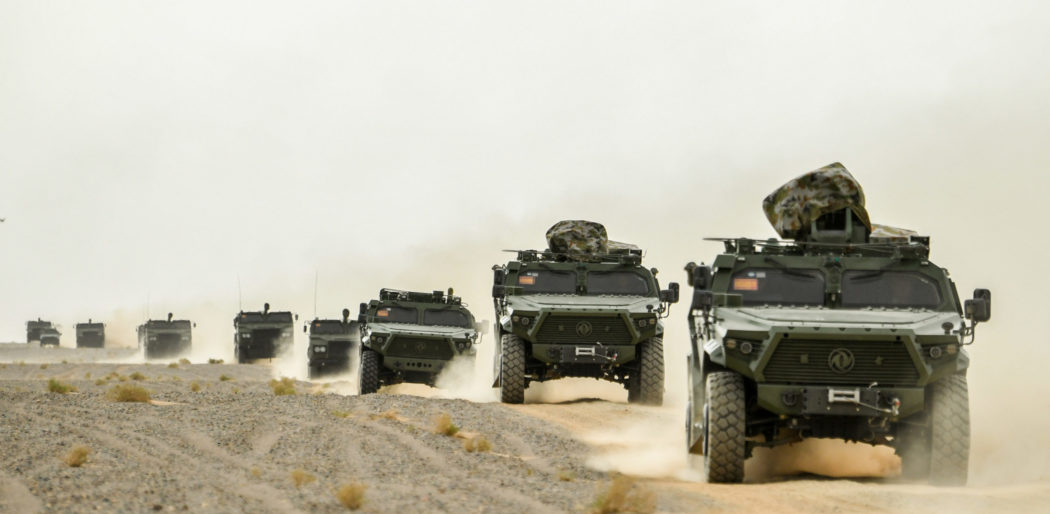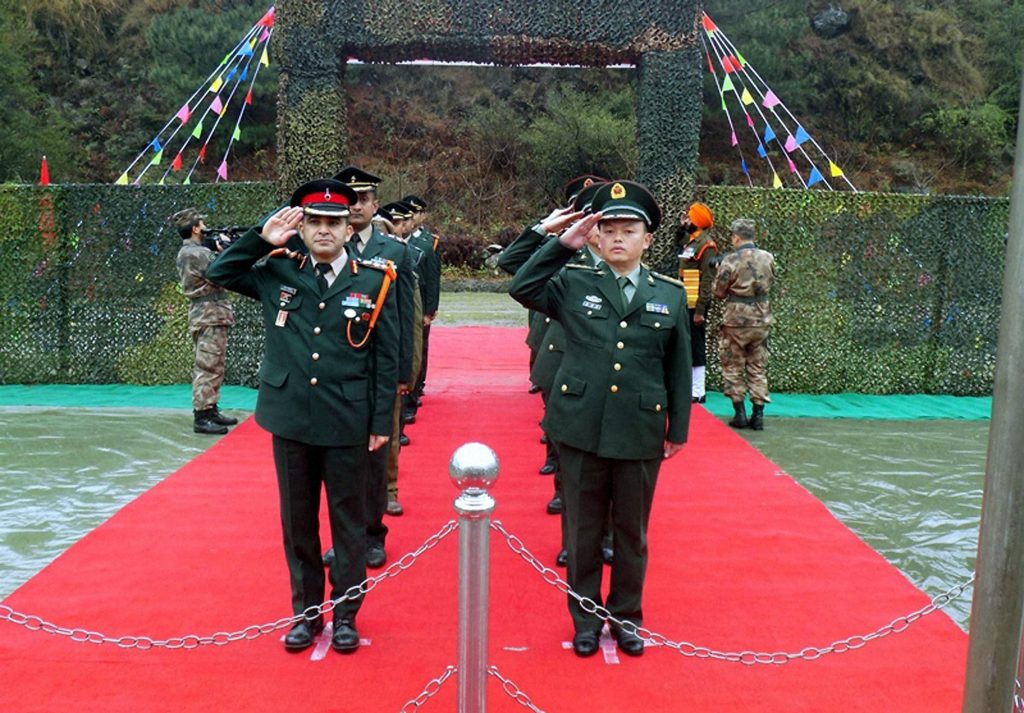Galwan Valley Clash: Impact on Regional Security and Nepal
- By Kite Sansar
- June 26, 2020
- 528
- 0

Durga Kunwar
Nixon era secretary of state and famous statesman, Henry Kissinger said, “If you can’t hear the drums of war you must be deaf” and that’s what India might have missed. Distinctly, the clash of Galwan Valley was pitching high with clamorous fog of war destined to culminate in deadly disputes.
As both China and India were dangerously juggling with a fireball on the border issue, romancing with the world’s longest unresolved boundary in the Himalayas, finally proved fatal. The incident of June 15, 2020, at Galwan valley, Ladakh shook the entire world. The deadly military clash left scores of casualties on both sides, succumbing Indian military commanding officer along with 20 under officers and jawans. The Galwan incident is not an isolated incident but a result of well-planned and crafted tactics that’s been on-going along the disputed border beginning in 2017 at a plateau known as Donglang in China and Doklam in India.
Gauging the cumulative mettle of either side, it finally culminated in Galwan valley in a very unprecedented way, perishing more than a platoon level strength on both sides. The Galwan Valley standoff witnessed a deadly use of force engaging primitive tools like stones projectiles and wooden clubs but leaving behind a loss of what lethal weaponry or laser-guided missiles might have missed. It is indeed the deadliest peacetime casualty- India taking much of the brunt and psychological impact.

China’s discreet silence over its loss may be greater unless disclosed. The engagement, however, is a violation of the agreement reached barely a few weeks ago underlining immediate de-escalation. The brutal heist on the highest battlefields of the world is the worst after many decades amounting to aid risk of war and overshadow any possibility of talks. The impact of Galwan incident will usher manifold consequences beyond the physical borders. Nepal may not remain unscathed against its tremors particularly when she has own outstanding border issue where China may be involved at some point.
With no certain numbers offered by the Chinese side, at least 20 Indian Army personnel are reported confirmed dead. Both sides came up with a flurry of statements blaming one another. Both parties to the conflict did fail to observe the understanding reached on June 6, 2020, among senior military commanders to initiate a process for an immediate de-escalation.
With contradictory facts coming into play, it is however clear that none of the sides respected negotiation, neither pulled off its troops but instead engaged in a physical tussle, pushing each other to retreat and ending up in a deadly conflict.
There are two main disputed territories between the two Asian giants. First, India considers Arunachal Pradesh, lying east of Bhutan, as one of its own indispensable territories while China claims the area as part of southern Tibet. The other is Aksai Chin, which New Delhi sees as part of its union territory of Ladakh but China as a disputed territory, refusing McMahon line’s demarcation reached in 1914 between British India and Tibet representatives.
In 1962, both countries fought a war, China denouncing the McMahon line and justifying the aggression.
Deadly Escalation
The hostility of India and China runs deep and has a historical footing. However, the overt animosity between the two nuclear-studded nations exposed just years back when Modi established a closed bilateral relation with the United States, initiating military ties and procurement of military gadgets to sharpen its “vintage” ordnances.
The rapid construction engaging Border Road organization (BRO) along the LAC in Siachen glacier to open Zozilla pass throughout the year facilitating military movements to catch up China’s growing threats is precisely when China may have decided to draw first blood.
The force built up by India military in rear areas to consolidate its reinforcement by moving the military columns coupled with heavy caliber air mobility with workhorse Chinook helicopters and deploying Sukhoi fighter jets near the border was taken as provocative measures by China.

In hindsight, Indian diplomacy to cast influence in the Indo Pacific region under Indo Pacific Command is what China thought to be detrimental to its BRI aspirations.
Xi doubled down with countermeasures by building strong strategies with a formidable military presence in Tibet, Bay of Bengal, and the Indian Ocean. The recent Chinese dry military exercise somewhere in Tibet Plateau was nothing but psychological warfare to intimidate India and in military terms, is a battle procedure, to trap the Indian military.
The consistent threats by Beijing to India to drop its long-standing claim over the Indian Ocean as their “back yard” is also tantamount to substantiate this claim. Altogether, linking the pieces leads to a clear intent of the use of force which India seems erroneously missing and finally paying a price by losing some of its battle-hardened soldiers in Galwan crevasses. More so, the entire Indian military establishment was taken completely off guard.
Last year in April and June, the Chinese sides made their intentions clear by moving disproportionate Chinese formations with mechanical vehicles and equipment objecting to a road constructed by Indian authorities near Sikkim. Scuffles at Pangong Tso and Naku La resulted in significant injuries due to “aggressive behavior on both sides”. The standoff lasted for more than 72 days with high intensity and drama.
The decision of the Modi Government taken on 31 October 2019 declaring the Ladakh region as union territory came with the heavy military response from the Chinese side as they moved closer to Finger 2 area of Pangong Tso and started blocking Indian troops who so far were comfortably conducting long-range patrol up to finger 8. The Pangong Tso is 135 km long and 5-7 km in the width of which about one-third is held by India while the rest is held by China.
However, by June, both sides started building up their dominance over the area with aerial maneuvers and additional troops on the ground. The Indian border forces were now restricted to finger 3 and the SAT image would clearly show finger 8 areas under Chinese military “occupation” with permanent air capabilities. The confrontation was imminent.
The battle procedure order gained momentum after the visit of Indian Army Chief General Manoj Naravane to Leh sector reviewing the overall situation on the ground while Chinese President Xi Jinping directed China’s armed forces to strengthen the training of troops and to be ready for war.
As the fog of war was building up and conflict clearly visible, at the end of October, both sides dangerously confronted at Pangong Tso lake, Galwan Valley, Demchok, and Daulat Beg Oldi, trading blows with brutal use of force, Chinese military taking some of the Indian soldiers’ hostage.
The growing skirmishes and deadly escalation along the border with the deployment of heavy mechanized armored troops didn’t go unnoticed to the international community.
On June 2, the US Foreign Affairs Panel Chief slammed “Chinese Aggression” against India when China was noticed moving up its forces along the Line of Actual Control (LAC). Drawing international flakes, several rounds of talks were initiated but grossly failed to peter out unfolding hostilities that began with a violent confrontation between rival patrols on May 5-6 this year near Pangong Tso that left scores of soldiers from both sides injured.
Neither the de-escalation process after June 6 at the military level be ably froze the Galwan Valley clash nor the tempo of befitting response from the Indian side now looks to subside.

Conflict Dynamics
The Galwan incident left 20 confirmed death to the Indian side with at least 40 PLA members reported injured. The standoff is a massive blow to both sides who are grappled with COVID-19 pandemic, putting all their effort and existing resources to tame the curve.
Chinese side with its expansionary foreign policies is finally stretching its wings, not only at the South China Sea but also far west, tightening its grip to overlook the whole Indian sub-continent and beyond with a “permanent” military base in the Himalayas and, Indian Ocean, laced with high tech surveillance and sonar devices pitched at the altar of mighty the Himalaya and, to the depth of Pacific.
However, the intention does not stop here. With Belt and Road Initiative (BRI) into play, China wants to dominate the entire Asia-Pacific and the Eurasian region by thumping its firm foot over the Hindukush mountain range including the Himalayas, spreading from Tajikistan to Burma, asserting its authority over Arunachal Pradesh and the South China Sea in the east to the Eurasian plate in the west beginning dominance over Aksai Chin and Hindukush.
A similar approach is on the Indian sub-continent in the south. The massive landscape of Tibet Plateau up into the north, a quarter of Mongolia is already under Chinese authority including Tibet. As the South China Sea under its area of domination, the dragon is pushing its frontiers not inch by inch but by miles.
The intentions, therefore, are clear- particularly when Chinese naval forces are aggressively patrolling high seas- from the strait of Malacca to the Indian Ocean, running past the Red Sea, dotting its presence with “string of pearls” with firm domination on the high Himalayas under BRI in an effort to alter global strategic equilibrium by taking control of entire Asia-Pacific and Indian Ocean region.
Therefore, the communist expansion of its military authority over half of the globe has much to do with an overall intention to displace the current world order.
The Ladakh scuffle is a major game plan to scourge India- a formidable gatekeeper in the Indo-Pacific region who happens to be the only major hurdle in their super ambitious plan to dominate north and south of Himalayas and beyond the Indian Ocean.
Taking out the Maldives, Sri- Lanka, Bangladesh, and other southeastern nations from the clutches of Chinese dominance and debt trap under the “Look East” and “Neighbor First” policy, the Indian masterplan stood against the Chinese strategy. With an intension to “teach a lesson” the Chinese authorities crafted a plan to encircle India from north and south.
In order to deplete the Indian military resources and disintegrate joint military efforts, China seems deliberately exposing its movement along LAC which runs more than 2520 miles (4056 km) with some of the most inhospitable and harsh terrains to draw Indian military into foul play and patrols the Indian Ocean to overstretch Indian Navy in the Bay of Bengal, Indian Ocean, and Arabian Sea.
Chinese begin disrespecting the status quo to trap Indian forces, inviting them to embark on a face to face confrontation in order to drag them into a conflict. With nuclear deterrence strategy in place, a legitimate limited war was not overlooked as Xi declared PLA to be prepared for conventional war.
In the meantime, the force built up and scores of brawls along the border caught the US attention and world alike as Chinese won’t give up flirting with the unsettled border in the Ladakh region nor they would abandon romanticizing the South China sea and the Indian Ocean. Mapping all movements and maneuverability, the Galwan clash appears a part of the ambitious plan.
mpact on Nepal
As Indian soldiers were engaged in Doklam with Chinese forces, a fresh stand-off erupted in another side of the Indian border- not with Pakistan but with Nepal- after the inauguration of a Himalayan link road that passes through the disputed area of Kalapani on May 8, 2020.
The region of strategic importance, the new road stirred a storm in a teapot that was brewing for many years. Indian establishment blamed China for creating the crisis while Nepal maintained its stand that the Kalapani issue is based on its own merits.
However, there is a little doubt that China rarely shows any restraint to meddle with any issues than run against India, the Kalapani issue, therefore was mired in such controversies. Understandably, the influence of China has grown in Nepal, much to the dismay of Indian administration but it was only when India imposed a unilateral embargo showing its displeasure over the promulgation of the new constitution in 2015, distancing two most hospitable nations otherwise.
With the current standoff with Kalapani issue which is a tri-junction of Nepal-India-China, a force built up by India and China at Kalapani and Gunji is apparent. This means the bilateral issue of Kalapani with India is going to be displaced by the Chinese-Indian conflict.
Since Limpiyadhura being the trijunction, and Lipulekh connecting China and, claimed by Nepal, any animosity between India and China will directly impact the possibilities of early border dispute settlement between Nepal and India.
Moreover, commercial embargo and presumptive tough policies on Huawei communications, stringent trade, and tariff policies by India, import bans, and other financial sanctions may further escalate, leaving a huge impact on already fragile Nepalese economy.
The India China conflict may also call for some stringent border management measures on trans-border movement along the Nepal-India border. Therefore, the early settlement of the India China border is also well into the realm of Nepalese national interest and trade.

Way Forward
The border dispute and conflict escalation must come to an amicable resolution. As long as the competition between India and China continues to remain over its influence in the region and beyond, the difference will take the shape of dispute in the unsettled border. The disputed border will always present a recipe for lethal confrontation but the causes of such standoff may not necessarily rest in its contours.
Mr. Modi and Xi do share congenial relationship and are shrewd statemen capable of resolving the issue without bartering economic gain or trading bullets along the border.
Therefore, the two responsible growing economies cannot afford to slide further to jeopardize hard-earned economic stability and development. Trading off such advantages with a full-blown war to settle the border dispute will only eat up own progress which they both have achieved after prolong deliberations and perseverance.
Nepal, strategically located and being an immediate neighbor must play a vital role in aiding both nations forging confidence-building measures and making all possible efforts to bring the conflicting parties to the table and help to localize the Galwan confrontation.
The cautious move of Nepal may help both confronting nations to ease out the way, ceasing further deterioration and building trust to de-escalate the rising tensions along the border. Nepal can augment the significance of peaceful resolution by maintaining a status quo to its own issue.
This will win the goodwill of both sides to resolve their border dispute which will be of huge importance when we finally sit on the table spreading our maps to negotiate and settle our outstanding border issues.
(Mr. Kunwar is a Security Consultant with International Development Institute based in Washington D.C.)
source : kathmandupati








